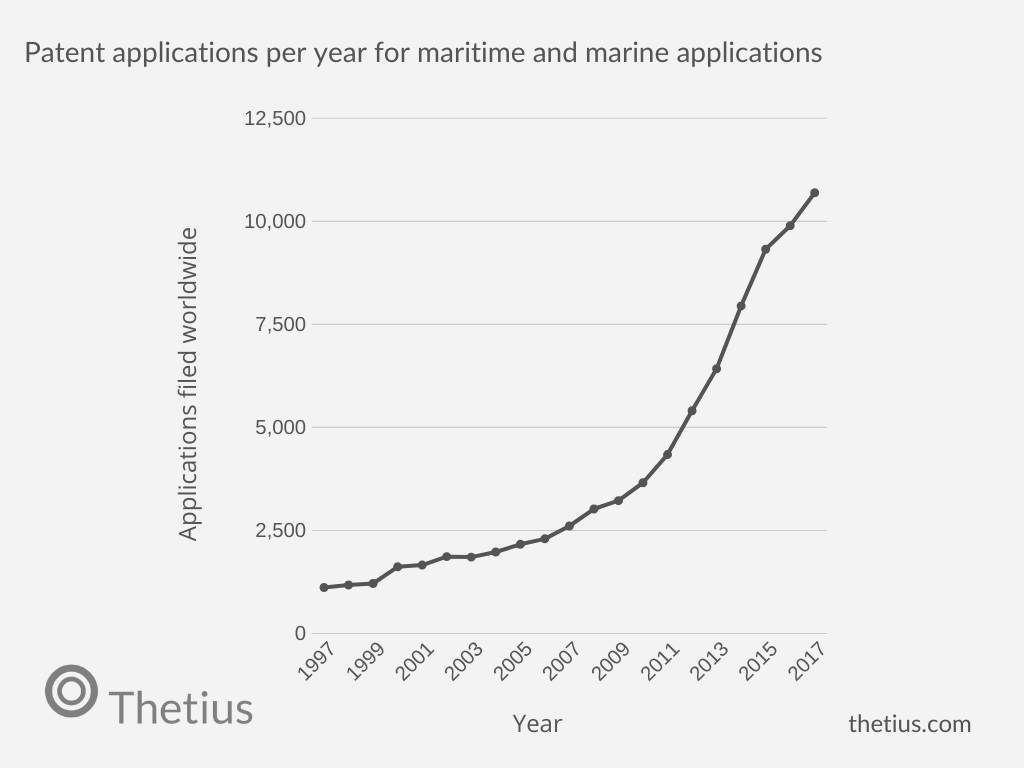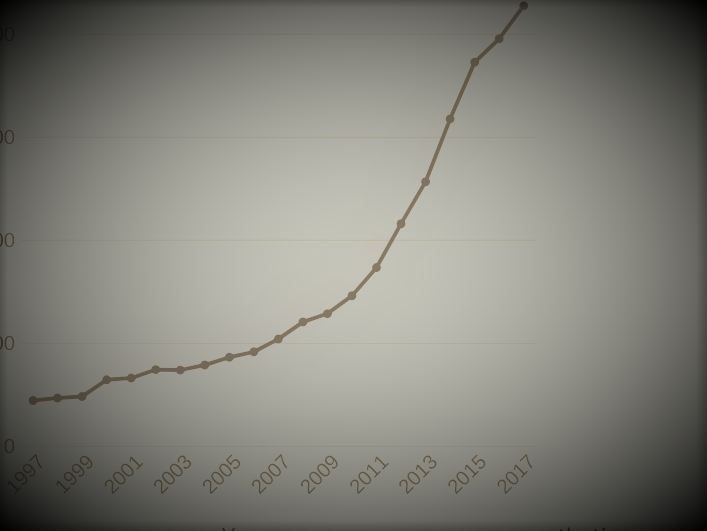Data shows maritime and marine patent applications rocket between 2007 and 2017
The number of patent applications for marine and maritime innovation has rocketed over the last decade as the industries search for increased efficiency. New research Thetius, a UK-based start-up and funding consultancy exclusively on behalf of Fathom World shows entrepreneurs and innovators, from start-ups, small businesses and established firms, have increased confidence in maritime and marine patents and the possibilities of the future.
The data has come to light following a publication by Thetius at the levels of private funding into maritime start-ups in 2019 and Thetius’s view of the coming year.
The patent applications have rocketed from a few hundred in 2009 to thousands in 2017 the last year that full data from patent application bodies could be collected. There were a little over 2,500 patent applications in 2007 to well over 10,000 in 2017, a near five-fold increase.

Nick Chubb, Thetius founder, told Fathom World that, though not a perfect barometer for innovation; the number of patent applications for maritime or marine applications filed has grown every year for the last 20 years.
It takes 18 – 24 months for patents to be published so the last year that I have a complete data-set for is 2017, but the growth is pretty clear.

But while Chubb warns that one should not read the number of patent applications on their own, it does make an interesting case for change when considering also the amount of private investment and government funding that has come into the start-up space.
In 2019 the amount of funding received by maritime start-ups seemingly also rocketed, though as Chubb points out in the recent “Shiptech” report from Thetius, this data is seriously screwed by the huge $1bn Softbank investment into the logistics-data start-up Flexport.
When one removes that one investment the amount invested into start-ups has dipped slightly, but is still high at $144m (with $190m in 2018).
Chubb points out that while the 2019 investment figure is 25% down year on year (Once the Flexport effect is removed) it has been achieved with fewer, but higher, investment values.
But in addition to private placement, there is still grant financing from public funds. As a percentage of the funds used in maritime innovation or research and development it has been declining. In 2017 35% of funding made to maritime technology companies was grant funding, while in 2019 this had dropped to 0.44%.
But here Chubb also warns about the data potentially being misleading.
“To be clear though, grant funding is not declining. It more than doubled from 2018 – 2019, but it is has become a much less significant source of funding when compared with the sums being put in to the industry by private investors.”
































